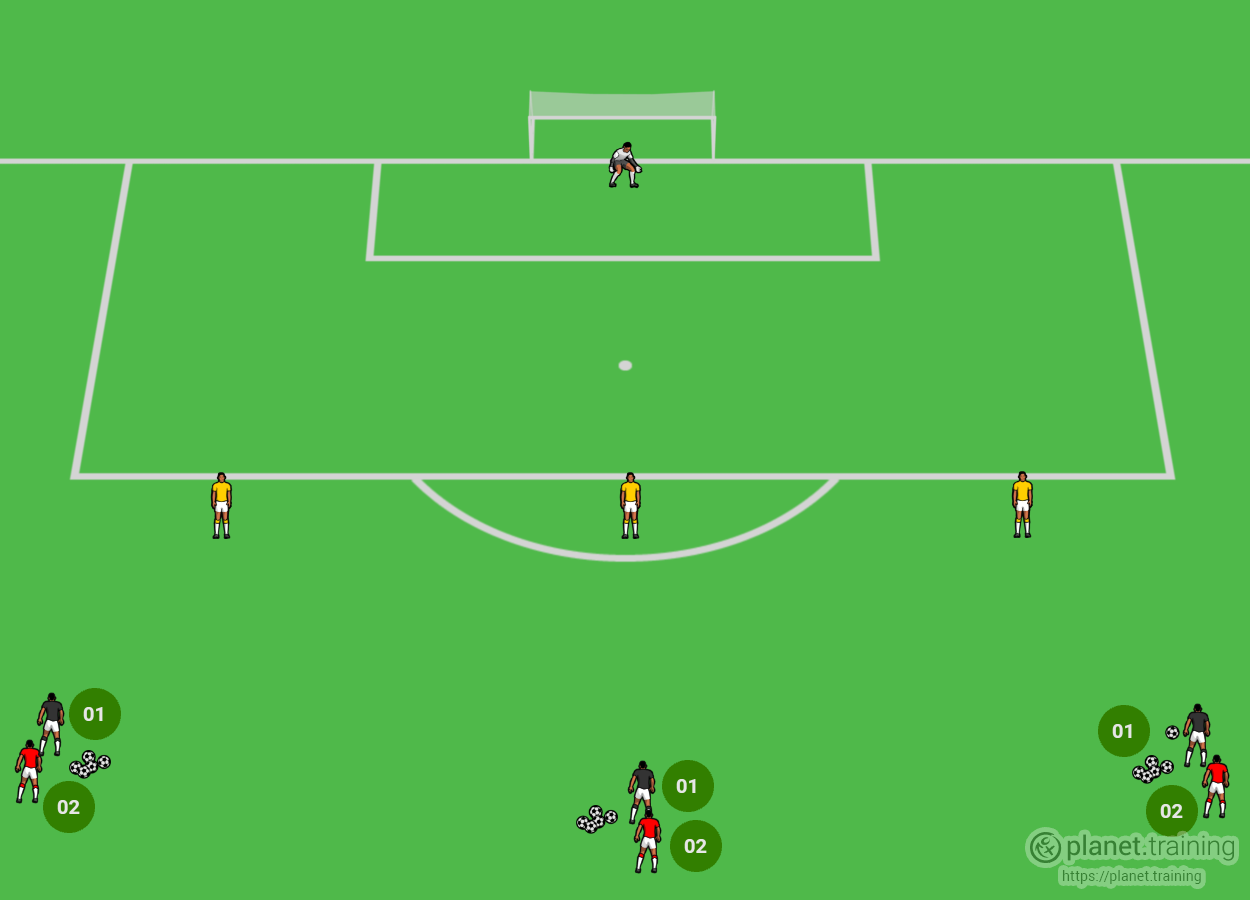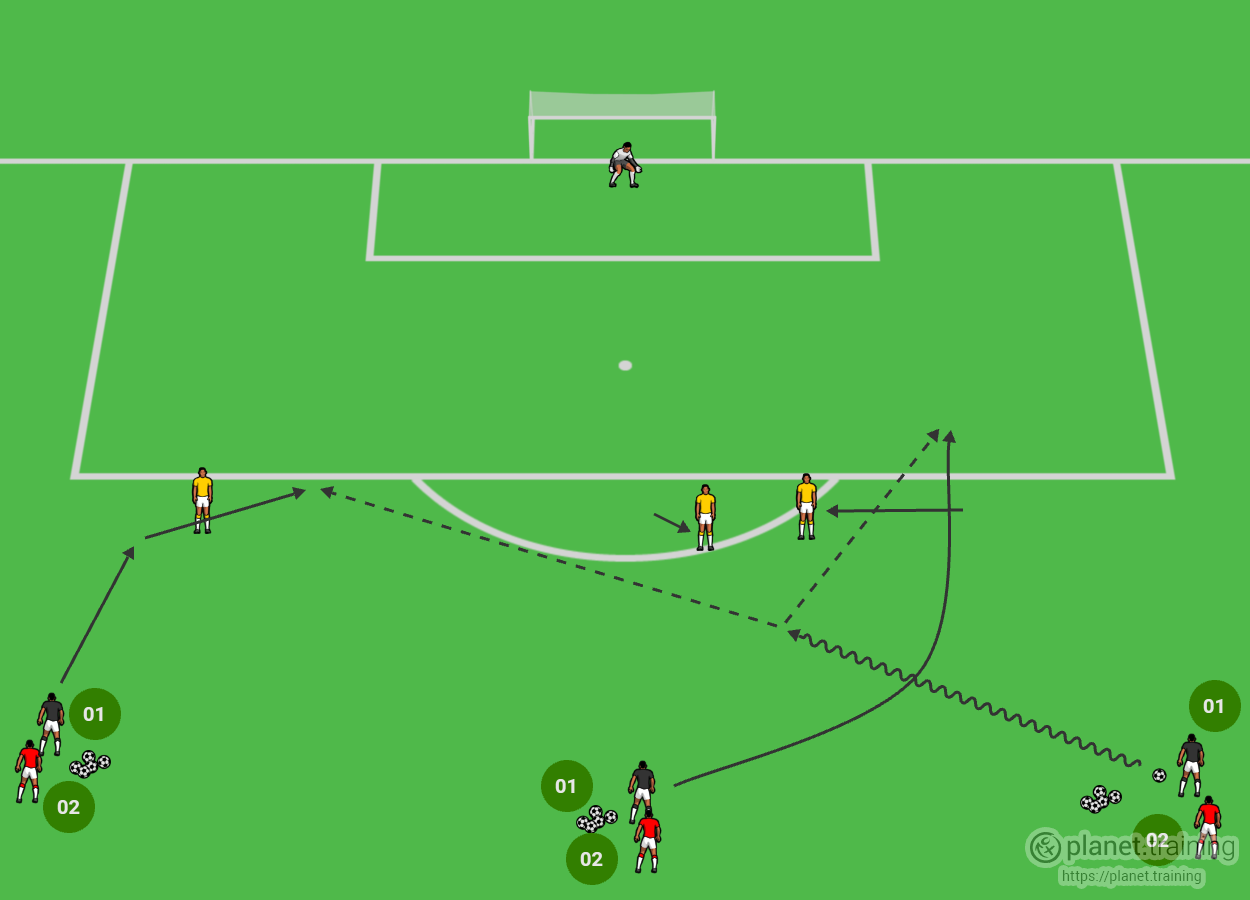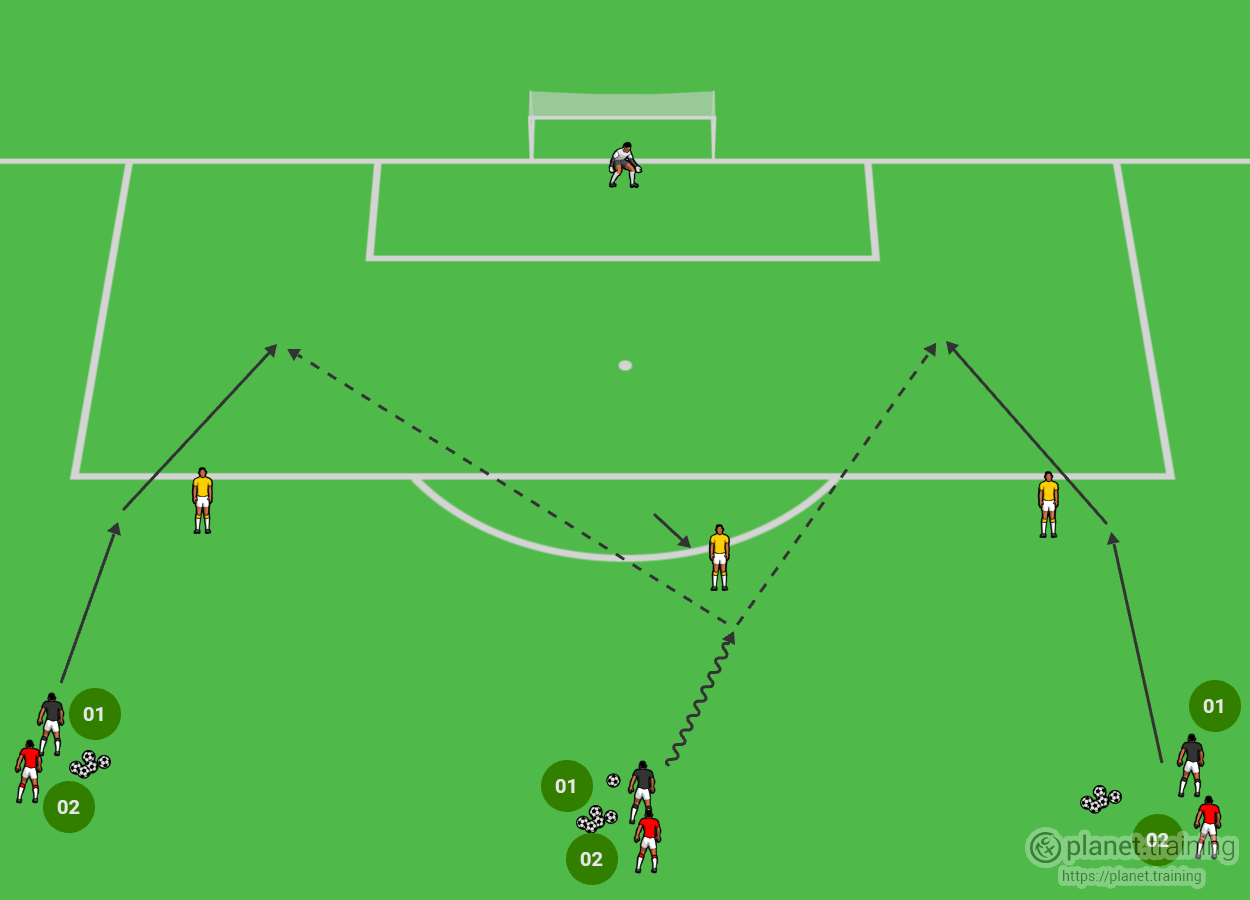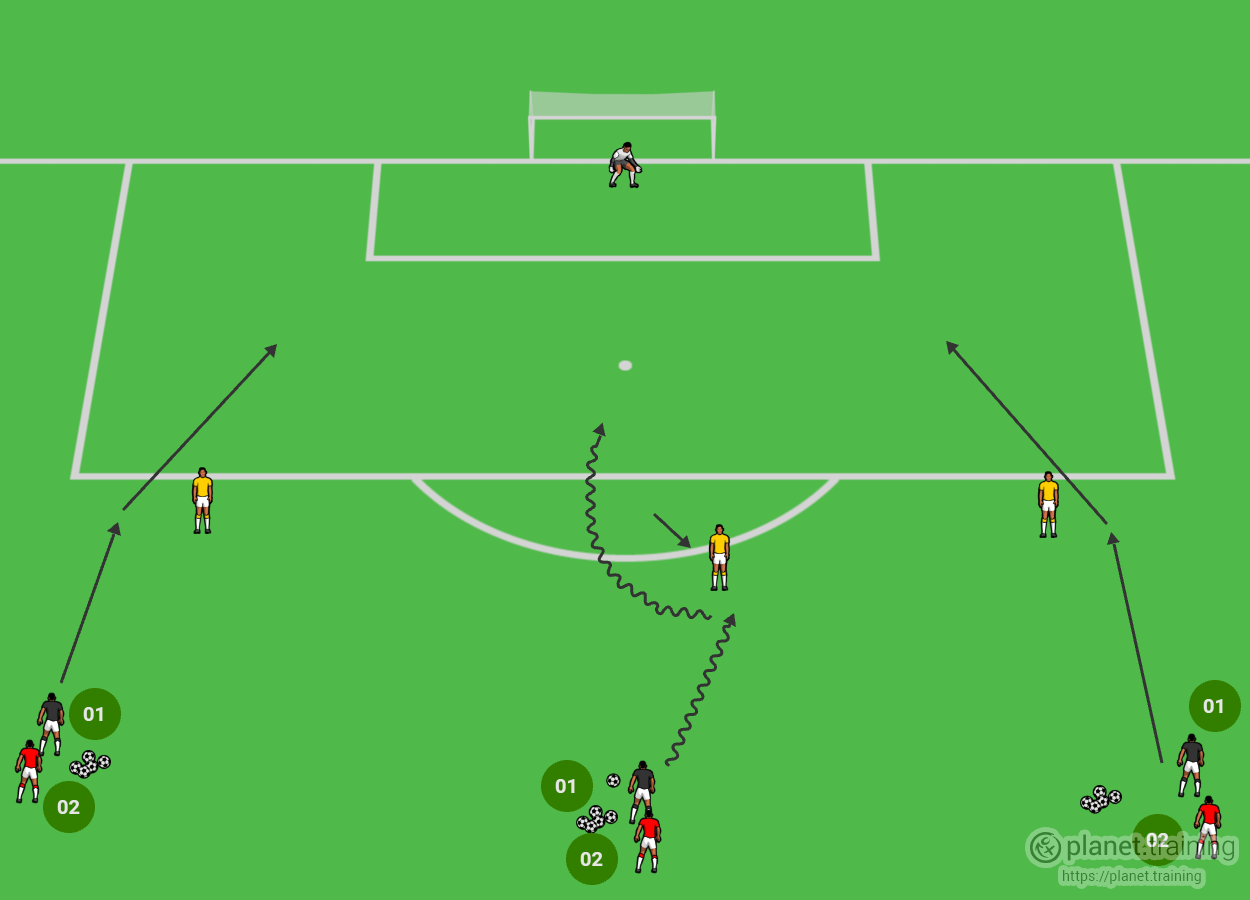By Sean Pearson
Area Size: 40 x 36 yards
Teams: 4 v 3 (2 or 3 teams of 3 depending on numbers)
Time: 20 Minutes
Objectives
- To be forward thinking in players’ decision making, both by passes or runs
- To make diagonal runs and NOT straight runs
The 2 main components for this small sided game that you must make you players aware of are first forward thinking, or 'forward decisions' so no backwards movement or passes as this should resemble to a fast break in soccer when players are chasing to get back and deny the attackers space. Therefore, the attack must be completed at speed. The second component is no straight runs! Straight runs help the defense out. It keeps them in their shape, they remain organized. It is the attacker's job to moved them out of position by diagonal runs. Whether on the ball or off the ball, these runs can vary and be at different angles and speeds.
It is also important to get across to your team that players may not get the ball, but because of their unselfish movement off the ball the team was able to create a chance and score. I feel this is very important to portray to the youth of today as they think if they are not the sole match winner or directly involved they do not get the attention and so do not want to do it. It is not the 'glamorous job' but it is an important job. This is why when you coach, make excessive positive comments about movement that displaces a defender for a teammate. Even more than the person who may have scored. This emphasizes the 'team' before 'I' ethos.
Execution
One team of 3 acts as a back 3 going across the 18-yard box. 2 other teams of 3 face them as the Left midfielder/striker, central striker and right midfielder/striker. The distance between the defending team and attacking team is 15 yards. This can be increased or decreased depending on preference. Each team wears a different color to determine who is currently involved. Eventually any player will be able to start with a ball but for now you should determine who starts.

Next tell the wide midfielder/striker to drive further inside towards the central defender. The central striker then overlaps them and the opposite midfielder/striker pulls away again. This should do a number of things to the defense. The central defender should begin to come forward (if they back off this gives the player an opportunity to shoot) The full back should come in to support the central defender. The player with the ball then has the option to pass to the overlapping player or through to the opposite wide player.

Now have the central striker start with the ball, but do not run straight. Again you want to move the central defender. The 2 wide players aim to spread the 2 full backs out by staying wide and going around them. As the central defender steps towards the ball, the pass is played to the best option. Again if the central defender backs away there is the opportunity to shoot.

If the gap is too small to pass through, then there is also the option of the central striker taking on the central defender 1 v 1 as the full backs are pre-occupied with the wide midfielders/strikers.

When you feel comfortable as a coach that your players understand their roles depending on who has the ball and what run they are making with the ball allow the players to decide who has the ball.
Extras
- Keep a tally of which team scores the most
- Instead of keeping the same team defending you can switch each time, after a team attacks, they become the defending team.
- Even though the attacks should be fast already you can add a time limit from the first touch until a shot. 5 seconds is a good time for this.
By Sean Pearson. Sean is also the author Coaching Team Shape in the 3-3-1, Coaching Team Shape in the 4-2-3-1 and Coaching Team Shape in the 4-3-3


